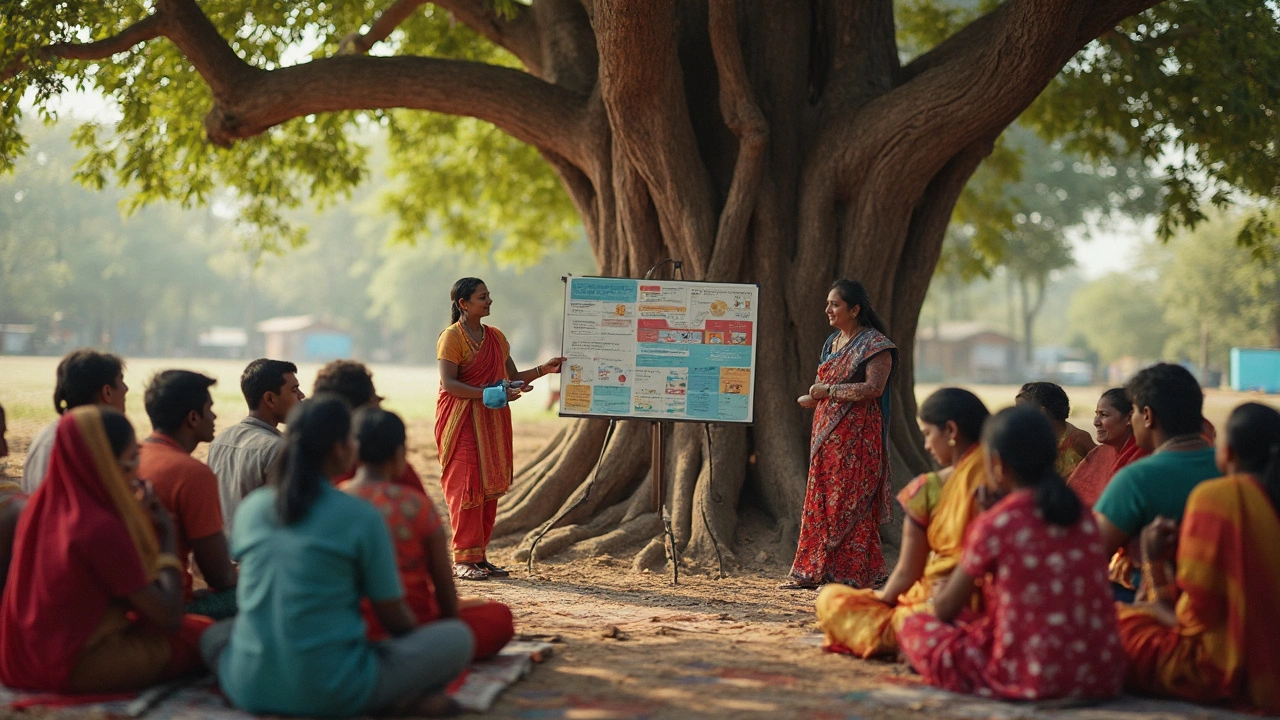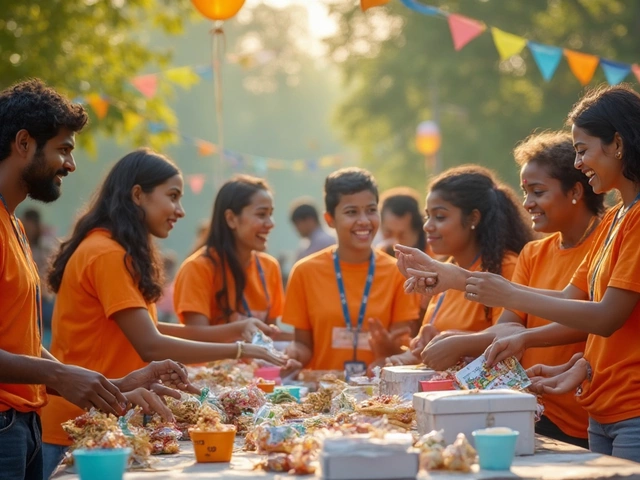Feeling overwhelmed by all the outreach programs out there? You’re not alone. Every flyer and Facebook post promises big results, but the truth is, not every effort sticks. The best outreach program for your community is the one that actually aligns with what people need right now—not just what sounds impressive.
If you’re looking to start (or join) a program, pay attention to how well it matches your neighborhood’s real issues. For example, does the area struggle with food insecurity, or is youth engagement the missing piece? Great outreach isn’t a one-size-fits-all game.
Before signing up or picking a model, talk to residents. Not just the loudest voices, but quiet neighbors too. When people feel heard, they’re way more likely to show up and pitch in. Skip the guessing and listen first—that alone sets strong programs apart from the flashy, short-lived ones.
- What Makes an Outreach Program Stand Out?
- Types of Outreach that Create Real Change
- Tips for Matching Programs to Community Needs
- Success Stories and Key Takeaways
What Makes an Outreach Program Stand Out?
So what separates a great outreach program from something that just looks good on paper? First off: real results. The best programs make a noticeable difference—whether that’s more healthy meals handed out, lower dropout rates, or just more people feeling like they belong. Residents tend to stick with programs when the work is visible and they can see real benefits.
Another thing that matters is how the program gets people involved. The most effective community outreach efforts build their activities around what locals actually care about. For example, the "Reading Partners" initiative didn't take off in Dallas until it matched mentors with kids from the same neighborhoods, making parents and students feel like they had a stake in things. Engagement makes or breaks a program.
Clear goals also help keep things on track. Outreach programs that fizzle out usually try to do too much, too fast, or they don’t measure what’s working. Here’s the deal: when groups set specific targets and check progress often, everyone knows where things stand and what to improve.
- Listen to community feedback regularly.
- Use local leaders or voices to shape the program.
- Keep goals clear and realistic.
- Make it easy for people to get involved (low barriers, flexible roles).
It's not just about passion—it’s the planning behind the passion. According to a 2023 report from the National Council of Nonprofits, programs that shared leadership roles with actual residents had 70% higher ongoing volunteer participation compared to top-down, outside-run projects.
| What Works Best | Retention After 1 Year (%) |
|---|---|
| Resident-led committees | 78 |
| Outside-led initiatives | 46 |
| Clear, measurable goals | 80 |
| Lack of concrete direction | 39 |
Bottom line: People join outreach efforts that don’t waste their time, actually listen, and let locals lead whenever possible. If you keep those things in mind, your community outreach project is off to a strong start.
Types of Outreach that Create Real Change
Picking the best way to make an impact isn't about reinventing the wheel—it's about learning what’s already working for others and making it fit your neighborhood. Certain strategies have a track record of delivering results, and they're not just the "feel-good" kind. Here’s what actually moves the needle in community outreach:
- Food Drives and Meal Programs: Food insecurity plagues millions of Americans, even in 2025. Community centers that host weekly free meals see attendance shoot up by 40% when they let neighbors pick the menu and handle distribution. Partnering with local farms or grocers lowers costs and helps fight food waste.
- Literacy and After-School Tutoring: Short on volunteers? Try a pop-up literacy corner at the local park or laundromat. One city in Texas saw reading levels among young kids jump by two grades in just six months by using simple, drop-in reading sessions twice a week.
- Health Fairs and Free Screenings: Mobile medical clinics drive up doctor visit rates, especially when they park themselves near worksites or school drop-off points. The CDC estimates these clinics lower emergency room visits by 15% in neighborhoods where regular care is out of reach.
- Neighborhood Skill Swaps: This one is old school, but so reliable. People trade skills—maybe a cooking demo for a free home repair lesson. Skill swap events are linked to higher trust and even safer streets according to a study from Rutgers, which found a 12% drop in property crime in neighborhoods running monthly swaps.
Here’s a quick look at how much some of these programs can achieve, based on recent data:
| Program Type | Measured Result | Source/Location |
|---|---|---|
| Food Drives | 40% attendance increase | Community Centers, Chicago |
| Pop-Up Literacy Sessions | 2 grade reading level jump | Dallas, TX |
| Mobile Health Clinics | 15% drop in ER visits | CDC Pilot Cities |
| Skill Swap Events | 12% reduction in property crime | Rutgers Study |
The trick is picking approaches that are proven and then customizing them to the quirks of your area. Leaders who get creative with the basics usually see the most staying power and engagement.

Tips for Matching Programs to Community Needs
Before jumping into any community outreach program, take a hard look at what your neighborhood actually struggles with. There's no point in running a book drive if what people need most is access to healthy food or affordable childcare. Start by gathering real data.
City data and school district reports are goldmines for local facts. For instance, according to the USDA, over 10% of U.S. households were food insecure in 2023. If your area’s numbers are higher, organizing food banks or free meal nights beats any flashy fundraising gala.
- Survey locals: Don't leave it to guesswork. Run short online surveys, set up a comment box at a central spot, or host small listening sessions. Even just chatting with people at the park can reveal what’s missing.
- Check existing efforts: Duplicating programs only leads to burnout and wasted resources. Before launching anything new, peek into what's already out there—food pantries, after-school clubs, or immigrant welcome groups. Fill gaps, don’t just add noise.
- Use simple metrics: Measure turnout, feedback, and how many people actually benefit. A shiny website says nothing if attendance is low and needs go unmet.
- Find natural leaders: Every community has go-to people—maybe that’s a local shop owner or a teacher—who everyone listens to. Get them on board early. Their trust carries weight.
The numbers don't lie. Here's a quick look at issues found in many communities, based on recent year-long studies:
| Community Issue | % Reporting as Urgent (2024) |
|---|---|
| Food insecurity | 14% |
| Affordable childcare | 9% |
| Youth engagement | 12% |
| Job training | 11% |
| English language support | 6% |
Even a small group can make an impact, but only if they're meeting the right need. If 12% of people say teens need more to do, a youth center open after school can make a real difference. Programs that adapt each year fare way better—for instance, Chicago’s city-run mobile health clinics changed their hours after seeing turnout doubled during evenings.
Keep talking to different groups and don’t be afraid to switch gears. The best programs grow alongside the community, not ahead of it. If you measure, listen, and act on actual data, your outreach won’t just look good—it’ll do good, too.
Success Stories and Key Takeaways
Some outreach programs don’t just check boxes—they flip neighborhoods for the better. Look at the “Little Free Pantry” movement, which started in Fayetteville, Arkansas. People leave food on outdoor pantry shelves for whoever needs it. What’s wild? There are now more than 2,000 of these pantries nationwide. This simple idea closed food gaps for thousands, and neighbors say it’s the first time they’ve really talked to each other. Food insecurity dropped by 11% in several cities using this model.
Or, check out Reading Partners, a literacy program placing volunteers in low-income schools. In 2023, their students jumped a full grade level on average in reading. They use one-on-one tutoring and stick to what works—no fancy tech, just real time together. Schools that added Reading Partners saw grades and student confidence go up fast.
More recently, the “Repair Café” idea took off in U.S. towns. Volunteers gather in libraries or rec centers to fix broken toasters, bikes, or sweaters for free. It stops tons of junk from hitting landfills and brings handy folks and newbies together. Over 380 Repair Cafés in the U.S. stopped an estimated 64,000 pounds of trash in 2024 alone and sparked new friendships along the way.
| Program | Main Impact | # of Locations | 2024 Result |
|---|---|---|---|
| Little Free Pantry | Food insecurity relief | 2,000+ | 11% drop in food insecurity |
| Reading Partners | Student literacy | 300+ | Average 1 grade level reading gain |
| Repair Café | Reduce waste, build skills | 380+ | 64,000 lbs. of trash saved |
So, what pops up in programs that actually last and make waves? Here’s what to keep in mind:
- Simple ideas travel far. If folks get it right away, they’ll show up and help keep it alive.
- It works best when people feel heard from the start. Good outreach listens first and acts second.
- Tap into local strengths. Is there a retired teacher? A plumber? Great programs use what’s sitting right there in the neighborhood.
- Make it easy to jump in. No five-page forms or fancy meetings. Keep the doors (literal and figurative) wide open.
- Always check if a program’s tackling the actual issue. Looking at real outcomes instead of just attendance feels like a no-brainer, but it’s where most efforts trip up.
The key to the community outreach puzzle is matching the right model to real local needs, building trust, and keeping it simple. If you want to spark real impact, start small, listen well, and pick a program backed by results you can see and measure.








